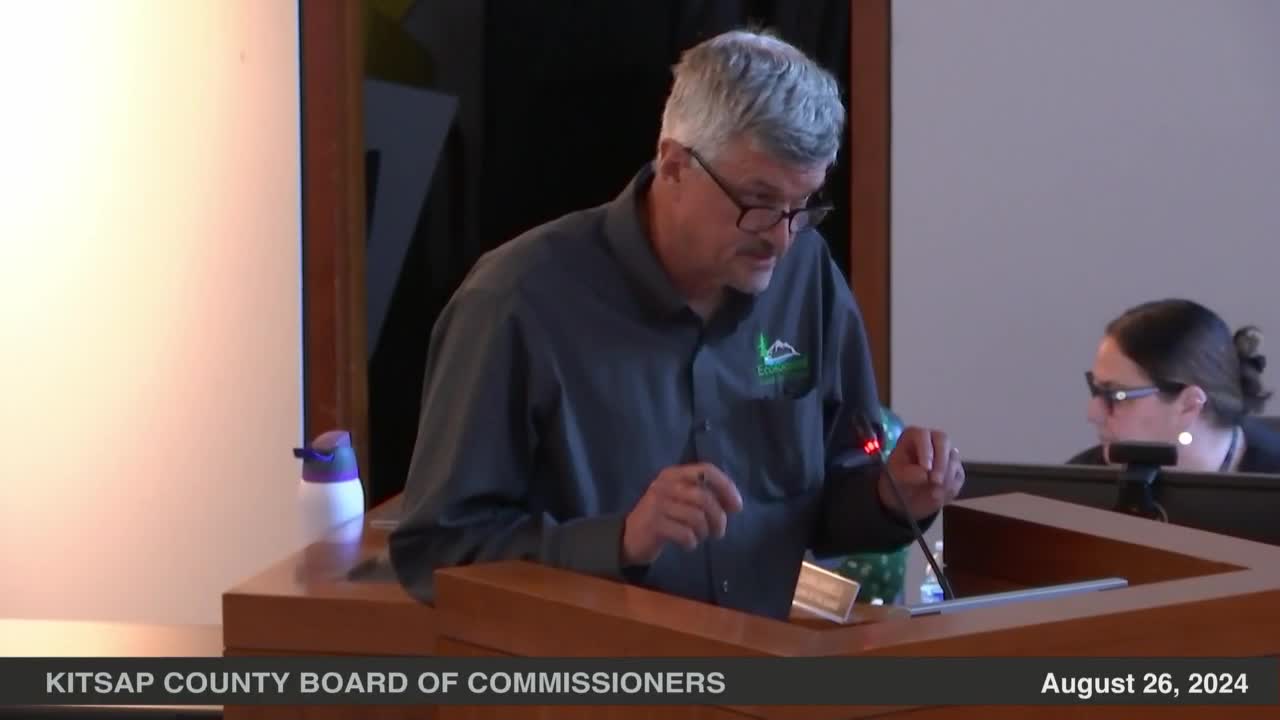Buffer Zone Controversy Sparks Heated Debate Among Developers
August 26, 2024 | Kitsap County, Washington
This article was created by AI summarizing key points discussed. AI makes mistakes, so for full details and context, please refer to the video of the full meeting. Please report any errors so we can fix them. Report an error »

During a recent government meeting, significant discussions emerged regarding proposed increases to buffer zones around streams and critical areas, raising concerns among local developers and environmental planners alike.
One of the most notable proposals involves increasing the buffer for fish-bearing streams from 150 feet to 200 feet, marking a 33% increase. For non-fish perennial streams, the buffer would double from 50 feet to 100 feet, while non-fish seasonal streams would also see their buffer increased from 50 feet to 100 feet. This has prompted concerns from developers about the potential impact on land use and housing development, particularly for middle-income families seeking to build homes in the county. One speaker emphasized that the new regulations could render many parcels undevelopable, complicating the already challenging housing crisis.
Norm Olsen, an engineering consultant, raised issues regarding the proposed mitigation sequencing for geological hazard areas, which would now be subject to the same regulations as streams and wetlands. He argued that the one-size-fits-all approach to setbacks—set at 200 feet regardless of the specific geological conditions—could hinder effective project planning and approval. Olsen expressed skepticism about how the new mitigation sequencing would function in practice, particularly for geotechnical assessments that rely on site-specific data.
Mark Isis, another local developer, echoed these concerns, questioning the clarity of the term \"avoidance\" in the context of critical area ordinances. He highlighted the potential for arbitrary restrictions that could further complicate development processes and lead to unbuildable lots.
Mary Anne Weber, a local developer, urged the commissioners to delay the adoption of the new regulations until after the completion of the comprehensive plan, citing the financial implications of having to redesign projects mid-process. She warned that such delays could exacerbate the housing crisis by increasing costs and extending timelines.
In contrast, Marla Powers, an environmental planner for the Port Gamble S'Klallam Tribe, advocated for a shift from a \"no net loss\" policy to a \"net ecological gain\" approach, emphasizing the need for more effective environmental protections in light of ongoing pollution issues affecting local waterways.
The discussions reflect a complex balancing act between environmental protection and the need for housing development, with stakeholders on both sides expressing valid concerns about the implications of the proposed changes. The commissioners are now faced with the challenge of addressing these issues while ensuring sustainable development practices in the region.
One of the most notable proposals involves increasing the buffer for fish-bearing streams from 150 feet to 200 feet, marking a 33% increase. For non-fish perennial streams, the buffer would double from 50 feet to 100 feet, while non-fish seasonal streams would also see their buffer increased from 50 feet to 100 feet. This has prompted concerns from developers about the potential impact on land use and housing development, particularly for middle-income families seeking to build homes in the county. One speaker emphasized that the new regulations could render many parcels undevelopable, complicating the already challenging housing crisis.
Norm Olsen, an engineering consultant, raised issues regarding the proposed mitigation sequencing for geological hazard areas, which would now be subject to the same regulations as streams and wetlands. He argued that the one-size-fits-all approach to setbacks—set at 200 feet regardless of the specific geological conditions—could hinder effective project planning and approval. Olsen expressed skepticism about how the new mitigation sequencing would function in practice, particularly for geotechnical assessments that rely on site-specific data.
Mark Isis, another local developer, echoed these concerns, questioning the clarity of the term \"avoidance\" in the context of critical area ordinances. He highlighted the potential for arbitrary restrictions that could further complicate development processes and lead to unbuildable lots.
Mary Anne Weber, a local developer, urged the commissioners to delay the adoption of the new regulations until after the completion of the comprehensive plan, citing the financial implications of having to redesign projects mid-process. She warned that such delays could exacerbate the housing crisis by increasing costs and extending timelines.
In contrast, Marla Powers, an environmental planner for the Port Gamble S'Klallam Tribe, advocated for a shift from a \"no net loss\" policy to a \"net ecological gain\" approach, emphasizing the need for more effective environmental protections in light of ongoing pollution issues affecting local waterways.
The discussions reflect a complex balancing act between environmental protection and the need for housing development, with stakeholders on both sides expressing valid concerns about the implications of the proposed changes. The commissioners are now faced with the challenge of addressing these issues while ensuring sustainable development practices in the region.
View full meeting
This article is based on a recent meeting—watch the full video and explore the complete transcript for deeper insights into the discussion.
View full meeting
